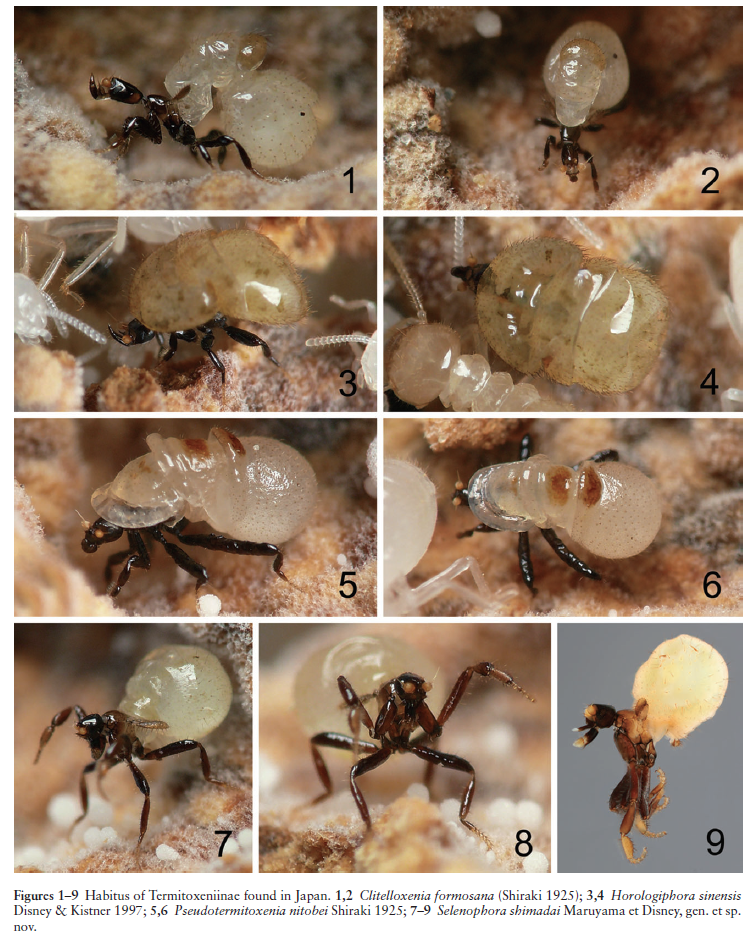Termite-tormenting flies
The nests of social insects are chock-full of all sorts of delicious resources and a magnet for freeloaders. Not only is there lots to eat, such as the brood of the nest makers and general nest detritus, but these elaborate insect cities are a stable, sheltered refuge from the outside world.
The only trouble is that the nest-makers are well armed and itching to tear apart any invaders. To get around this problem, lots of insects have evolved all sorts of remarkable ways of fooling their hosts and in doing so they’ve become extreme specialists of these domains.
Some of these ‘guests’ dupe their hosts by tapping into the chemical communication through which these nests are organised. Others have evolved less subtle strategies and are equipped with tough armour or cases fashioned from faeces and particle of soil.
Of all these, perhaps the most extraordinary are the scuttle flies that live in the nests of fungus-farming termites. The adult female flies have a big, swollen abdomen and they do have a superficial resemblance to their hosts, but their acceptance by the termites is probably more due to compounds they secrete that fool their hosts into integrating them into the colony.
Some photos below. Remember, these are FLIES.

Further reading
- Dupont S & Pape T (2009): A review of termitophilous and other termite-associated scuttle flies worldwide (Diptera: Phoridae). Terrestrial Arthropod Reviews 2 (1): 3-40. doi : 10.1163 / 187498309X435649
- Disney RHL (1994): Scuttle Flies: The Phoridae. Chapter 5: Development. Springer Verlag. ISBN 978-94-011-1288-8
- Maruyama M, Komatsu T, Disney, RHL (2011): Discovery of the termitophilous subfamily termitoxeniinae (Diptera: Phoridae) in Japan, with description of a new genus and species. Entomological Science 14: 75-81. doi : 10.1111 / j.1479-8298.2010.00409.x
- Disney RHL & Meg S. Cumming (1992): Abolition of Alamirinae and ultimate rejection of Wasmann’s theory of hermaphroditism in Thermitoxeniinae (Diptera, Phoridae). Bonn Zoological Contributions NF 43 (1): 145-154.
- Disney RHL (1997): Post-eclosion heterochrony in the adult females of a termitophilous fly (Diptera, Phoridae). Bonn Zoological Contributions 47 (1/2): 77-86.
- Cook CE, Austin JJ, Disney RHL (2004): A mitochondrial 12S and 16S rRNA phylogeny of critical genera of Phoridae (Diptera) and related families of Ashiza. Zootaxa 593: 1-11.
Leave a Reply